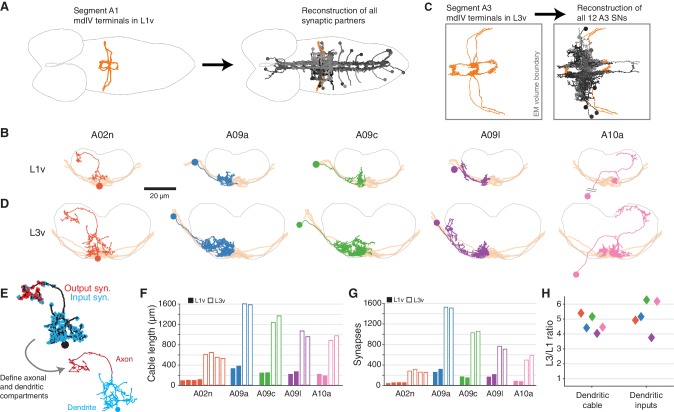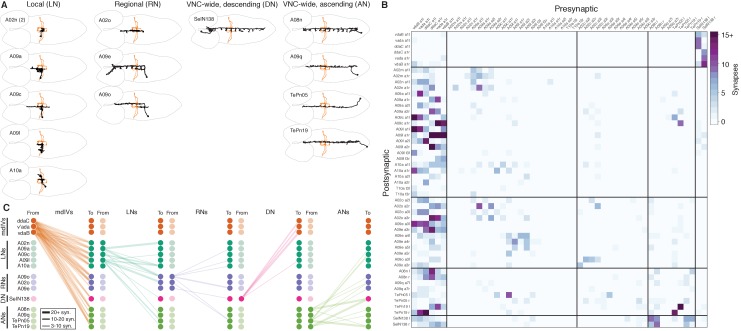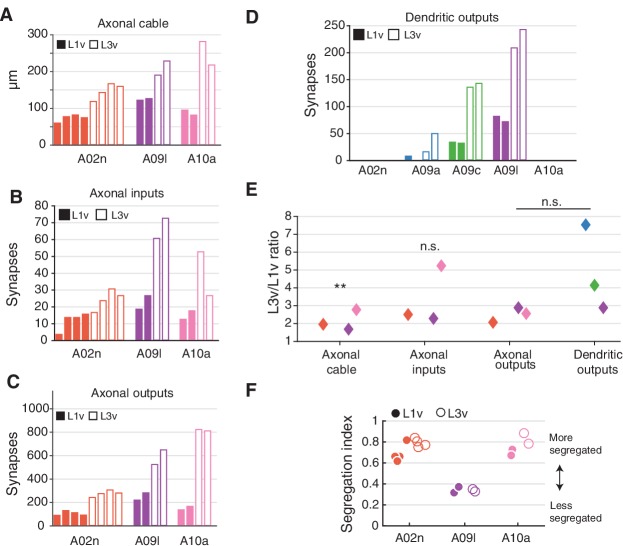(A) All cell types synaptically connected to mdIV terminals in the L1v. Cell types were organized by spatial extent of the dendrites. Dorsal views of a single example of each interneuron cell type (black) and the mdIV terminals of segment A1 (orange), anterior to left. Outline indicates CNS boundary. Local neurons (LNs) had dendrites spanning 1–2 segments, regional neurons (RNs) had dendrites spanning 3+ segments but not the whole VNC, a descending neuron (DN) had dendrites in subesophageal zone (SEZ) and an axon in VNC, and ascending neurons (ANs) had cell bodies in the posterior tip and projections that spanned the entire VNC toward the brain. See Supplemental Atlas for more views of cell types. (B) Connectivity between individual cells in the mdIV network expressed as an adjacency matrix. Entries indicate the number of synaptic contacts from the column neuron to the row neuron. Black lines separate mdIV/LN/RN/DN/AN classes. Note that mdIV order is clockwise from ventral left. (C) Connectivity between cell types in the mdIV network. Each column indicates connections from cell types in the left category to all cell types. Line thickness indicates number of synapses. Connections not observed at least twice at a 3+ synapse level are not shown here. In addition to the LN networks discussed elsewhere, we also find a strong pathway for feedback regulation of mdIV terminals. The SEZ neuron SeIN138 has an axonal projection descending through every abdominal segment, along which it both receives synaptic input from and outputs back onto mdIV terminals of all subtypes, offering a local axo-axonal feedback pathway across just a few microns of axonal arbor. Interestingly, SeIN136 also receives dendritic input near the SEZ from two ascending mdIV projection neurons, A08m and TePn19, that receive mdIV input throughout the nerve cord. This mdIVANDNmdIV pathway could allow every mdIV terminal across the body to be presynaptically regulated by ascending nociceptive input coming from any one location on the body. No other cell type was strongly or consistently pre-synaptic to mdIV terminals, suggesting this is the only such direct pathway.



